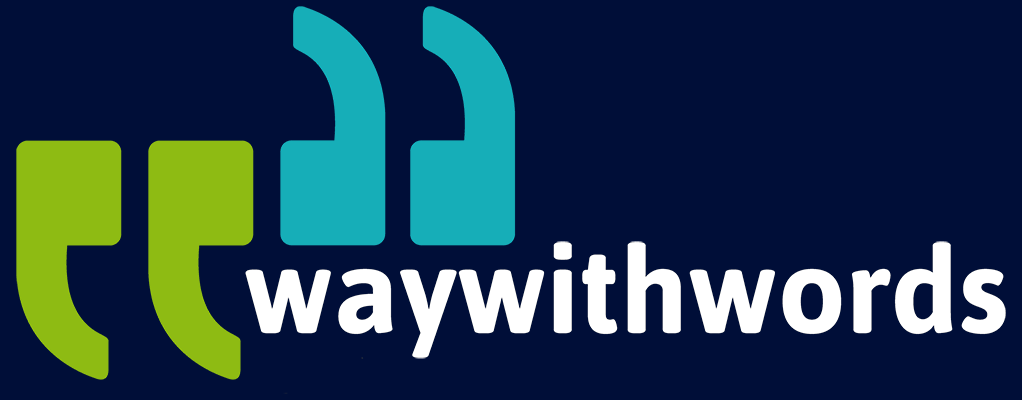How Do Transcription Services Handle Accents and Dialects?
Common Questions Around Accents and Dialect Transcription
When converting spoken word into written form, one thing stands above all else: accuracy. Yet, ensuring accuracy becomes far more complicated when a speaker’s accent or dialect introduces variation in pronunciation, pacing, grammar, or vocabulary. This is a frequent and nuanced challenge for transcription providers, especially those who are required to provide custom transcript formatting. Accents and dialects bring cultural richness and authenticity to speech but create layers of complexity for transcription—particularly when automated tools are relied on without human intervention.
From legal cases involving multilingual participants to regional film production, from linguistic fieldwork to multinational customer service monitoring, transcription must reflect the reality of how people actually speak—across countries, communities, and social identities.
Below are some of the most common questions asked around transcription accents and dialect transcription:
- How do transcription services ensure accuracy when dealing with strong regional accents?
- Can automated transcription tools accurately handle dialects or slang?
- Why do human transcriptionists still play such a vital role in this process?
- What are the risks of misinterpreting speech variation in formal or legal settings?
- Can transcription ever truly reflect the tone and identity embedded in dialects?
This short guide explores these questions and more, offering a practical, in-depth view of how transcription services address speech variation, the essential role of context and culture, and why accurate transcription is critical across industries.
How Transcription Services Handle Accents and Dialects
1. The Complexity of Transcribing Accents and Dialects
Accents and dialects aren’t surface-level quirks. They’re integral to how language is shaped by geography, culture, identity, and history. An accent may modify the way words are pronounced without altering their standard structure. A dialect, on the other hand, may bring an entirely distinct lexicon and syntactic structure into the mix.
Take, for example, the differences between standard American English and Appalachian English. Beyond pronunciation, the dialect features unique verb conjugations and vocabulary. A transcriber without awareness of these features could mistake what’s said for grammatical error or gibberish.
Transcribers—especially those working without context—may mishear or miswrite entire sections. And machines, no matter how sophisticated, often fail to understand intent when pronunciation doesn’t match the narrow band of what they’re trained to recognise.
Key points:
- Accents shift phonetic delivery; dialects alter grammar and word usage.
- Region-specific expressions can confuse standardised systems.
- Cultural identity and locality deeply influence how language is spoken.
- Misinterpretation risks increase dramatically with speech complexity.
2. Human Transcribers and Regional Familiarity
No AI tool can replicate the value of lived experience and regional awareness that human transcriptionists offer. For example, someone raised in Newcastle will inherently understand Geordie inflections better than someone who’s never heard the accent before.
Professional transcription providers actively match projects with specialists based on accent exposure, geographic familiarity, or even multilingual capacity. This means someone transcribing a Nigerian English interview can understand local idioms, non-standard phrasing, and code-switching between English and Pidgin.
This nuance matters. Where a machine sees data points, a human hears layers of meaning.
Key points:
- Transcribers with regional exposure recognise nuanced speech.
- Familiarity reduces back-and-forth clarifications.
- Context-sensitive listening enhances interpretation.
- Some firms employ accent-specialist transcription teams.
3. The Limitations of Automated Transcription
Automated transcription is improving—but slowly. The overwhelming majority of ASR (automatic speech recognition) systems are trained on standardised datasets: neutral British or American English, clear audio, and formal speech. This doesn’t reflect how people actually speak in real-world settings.
An AI model might identify the word “better” when pronounced in standard form, but struggle with a Scouse pronunciation where it becomes “be’er.” Likewise, a Zulu-English hybrid phrase might completely derail the system.
As a result, human quality assurance is nearly always required. Especially in sectors where verbatim records are necessary—such as law, healthcare, or academic research—automated systems alone are inadequate.
Key points:
- AI models rely on narrow, controlled speech samples.
- Accents, slang, and multi-language use distort accuracy.
- Automation is useful but often needs human correction.
- Machines can’t yet grasp emotional or contextual nuance.

4. Speech Variation in Legal and Media Transcription
Words hold power in legal and media contexts. A single misinterpreted phrase can shift the meaning of testimony, influence sentencing outcomes, or alter a news story’s framing. It’s not just what is said—it’s how it’s said.
Legal transcriptionists are trained to detect every inflection, hesitation, or regionalism that may carry interpretive weight. The stakes are high. Witness reliability, contractual disputes, and compliance reviews often hinge on accurate verbatim records.
Similarly, media transcribers help preserve the authenticity of characters, stories, and voices. Capturing the unique rhythm of regional speech adds depth and credibility to productions.
Key points:
- Legal transcripts demand unaltered accuracy.
- Dialects can shift legal interpretation.
- Media requires tone, emotion, and rhythm fidelity.
- Accent-sensitive transcription prevents bias or distortion.
5. The Role of Context in Understanding Speech
Context is the invisible guide to understanding speech variation. A human transcriber reviewing a panel discussion about post-apartheid education in South Africa will benefit from knowing whether speakers are teachers, students, or officials. It shapes how terms are interpreted.
Audio context includes speaker intent, tone, location, background noise, topic, and emotional delivery. Machines cannot infer these subtle cues. A laugh, sigh, or sarcastic tone might alter the meaning of a sentence entirely—something that only trained ears can catch.
Human transcribers, through experience, draw on context to clarify ambiguous phrases, fill in gaps, and produce cleaner, more reliable records.
Key points:
- Context helps disambiguate unclear or overlapping speech.
- Emotional tone and background sounds guide interpretation.
- Location, topic, and speaker type influence word choice.
- Machines struggle without external indicators.
6. Training and Experience of Transcribers
Skilled transcriptionists are trained to understand a wide spectrum of linguistic variation. Over time, they accumulate a mental database of intonations, speech quirks, and regional structures. They know when someone is pausing thoughtfully or when they’ve switched dialects mid-sentence.
Transcribers also undergo formal training in phonetics, language variation, and cultural sensitivity. Industry leaders may also offer internal workshops, client-specific training, and QA feedback cycles to reinforce accuracy.
The more experience a transcriptionist has with non-standard audio, the faster and more accurately they can complete the work.
Key points:
- High skill level correlates with high accuracy.
- Training includes exposure to global speech varieties.
- Real-world practice builds linguistic intuition.
- Experienced transcribers resolve ambiguities faster.
7. Real-World Case Study: Academic Research Transcription
A UK university research department conducting oral history interviews in Donegal, Ireland, found that automated services could not parse Ulster-Scots dialect. Key phrases were mistranscribed, and entire passages were marked as “[inaudible].”
When the same recordings were handled by a human transcriber with exposure to Northern Irish English and local dialects, accuracy shot up to 98%. The result was not just usable transcripts—but culturally rich, precise documentation.
Key points:
- Academic data integrity depends on dialect transcription.
- AI gaps risk compromising research findings.
- Human expertise recovers value from difficult audio.

8. Custom Dictionaries and Glossaries
To improve accuracy, transcription clients can provide keyword glossaries that include names, places, product terminology, or cultural terms. This strategy prevents guesswork, particularly in files involving industry-specific or regional language.
Some transcription tools allow uploading these glossaries into ASR engines, enhancing AI output. Human transcribers also use them as reference tools to avoid mishearing or inconsistencies.
Key points:
- Glossaries improve speed and accuracy.
- Especially useful in technical or multilingual recordings.
- Combines well with human-AI hybrid workflows.
9. Customer Service and Global Communication
Global brands rely on accurate transcription of customer interactions to monitor quality, improve service, and train teams. Dialect transcription helps capture the full intent of a speaker—crucial when a complaint hinges on subtle tone or phrasing.
A Nigerian customer service call may include English, Pidgin, and local dialects. A transcriber unfamiliar with this mix could lose essential information. With proper dialect handling, brands can better understand client concerns, improve documentation, and streamline resolution times.
Key points:
- Transcription quality affects customer insights.
- Speech variation influences client satisfaction analysis.
- Training materials depend on dialect clarity.
10. Building Accent-Aware AI for the Future
The future of transcription lies in collaboration between human expertise and machine scalability. Companies like Way With Words are leading the charge by training AI on diverse voice data—including underrepresented accents, languages, and dialects.
However, building true accent-aware AI requires massive investment, ethical data sourcing, and continued human review. Until then, hybrid transcription remains the best option.
Key points:
- Future AI must include global language variation.
- Diverse datasets support fair, accurate transcription.
- Human review ensures ethical and quality safeguards.
Key Tips for Handling Accents and Dialects in Transcription
- Assign regionally matched transcribers – Boost accuracy by using transcribers familiar with the speech variation.
- Use speaker background information – Provide context about the recording’s origin, setting, and intent.
- Supply custom glossaries – Include terminology to prevent misinterpretations.
- Choose human-led or hybrid services – Avoid AI-only services for dialect-heavy content.
- Verify experience credentials – Ensure the transcription provider has a proven track record with accented speech.
Accurate transcription of accents and dialects is both an art and a science. It requires attentive listening, cultural knowledge, linguistic intuition, and technological support. While automation can assist with speed, it falls short in reliably handling speech diversity. Human transcribers—especially those trained in regional and non-standard language—bring clarity, context, and precision to the transcription process.
This matters in every sector. Legal firms can’t afford errors in court records. Media producers need to preserve the voice of their subjects. Academics rely on linguistic fidelity in fieldwork. And businesses engaging with international markets need transcription that reflects the nuance of every voice.
As transcription services evolve, success will hinge on integrating local knowledge, advanced tools, and human intelligence. Because when it comes to understanding speech, listening properly is everything.
Further Transcription Resources
Transcription Accents Resource: Accents and Dialects (Wikipedia) – Explores the diversity of accents and dialects in the English language and their impact on communication and transcription.
Dialect Transcription Resource: Way With Words: Transcription Services – Way With Words employs advanced technology and highly skilled transcribers to overcome common challenges in transcription, ensuring that clients receive accurate and reliable transcripts regardless of the complexity of their audio files.
